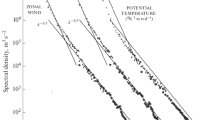Summary
— In geophysics, the correlation functions of random media are of principal importance for understanding and inverting the properties of seismic waves propagating in geological structures. Unfortunately, the kinds of correlation functions inappropriate for the description of geological structures are often assumed and applied. The most frequently used types of correlation functions are thus summarized and reviewed in this paper, together with an explanation of the physical meaning of their parameters.¶A stationary random medium is assumed to be realized in terms of a white noise filtered by a spectral filter. The spectral filter is considered isotropic, in a simple general form enabling the random media used in geophysics to be specified. The medium correlation functions, corresponding to the individual special cases of the general random medium (Gaussian, exponential, von Kármán, self-affine, Kummer), are then derived and briefly discussed. The corresponding elliptically anisotropic correlation functions can simply be obtained by linear coordinate transforms.
Similar content being viewed by others
Author information
Authors and Affiliations
Additional information
(Received October 27, 2000, revised March 2, 2001, accepted May 17, 2001)
Rights and permissions
About this article
Cite this article
Klimeš, L. Correlation Functions of Random Media. Pure appl. geophys. 159, 1811–1831 (2002). https://doi.org/10.1007/s00024-002-8710-2
Issue Date:
DOI: https://doi.org/10.1007/s00024-002-8710-2




